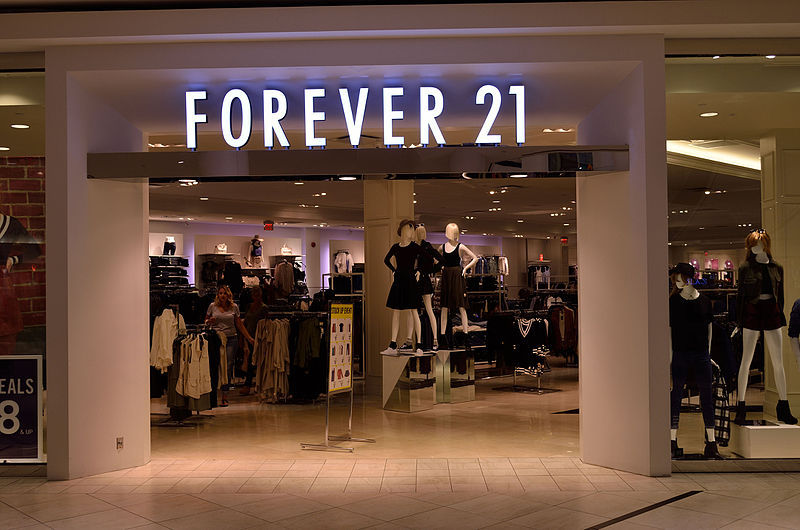Social media contributes to the fast fashion industry through micro trends and hauls
Originally published on November 9th, 2021 by Maisy Clunies-Ross, Staff reporter
The image shows well known fast fashion retailer Forever 21. Although Forever 21 was formed years before Shein, Shein has since overtaken them in popularity among teens. Citation: Forever21 at Markville Mall by Raysonho @ Open Grid Scheduler/Grid Engine licensed under CC0 1.0
Most social media users, particularly teenagers, have seen the ads, promoting “trendy” and “aesthetic” clothes for “super cheap!” The ads are enticing; the clothes look cute and affordable, almost too good to be true.
Unfortunately, they are just that: too good to be true. Most brands advertised on social media, like Shein, Urban Outfitters, and Forever 21, are fast fashion.
For those who don’t know, fast fashion is a term that describes both companies and business models that mass produce cheaply made clothes based on trends. The clothes are typically inspired by more expensive pieces, but made cheaply—often with child labor in sweatshops. In 20202 the International Labor Organization, estimated that around 160 million children are involved in labor, many making garments. So the next time you put on a five dollar sweater from Shien, know that there’s a six year old out there somewhere knitting a new one. Yes, they look nice, but they’re designed to fall apart fast, so consumers will buy more and take part in the next trend.
Along with using inhumane methods of manufacturing, the “fast” nature of these brands creates a huge environmental impact, as the clothes are mass produced and generally end up in landfills shortly after production. By most accounts, fashion causes 10% of global carbon emissions. 10%! Fast fashion has been an issue for a since the early 1990s when the term was coined, but thanks to social media platforms like TikTok and Instagram, the problem has gotten worse.
One way social media perpetuates fast fashion and consumerism is by speeding up trend cycles. A trend cycle is the lifetime of a fashion trend: its creation, rise, peak, decline, end; and eventually, return. These trend cycles typically took up to 20 years, but recently, they’ve been going down to as low as three months.
That means a trend gets introduced, becomes popular, and then is outdated in three months, and thus people feel obligated to buy more new clothes than ever before. Of course, it’s natural that social media would change the way trends play out. More people are sharing and viewing new things, which result in both (the creation of) new trends and a high turnover rate of old ones.
But the worst offender of all is trends that glorify consumerism and overconsumption. I’m talking about trends like hauls and styling challenges that promote overconsumption in both video creators (who feel obligated to buy more clothing to make more content) and viewers (who see the vast stylish wardrobes of their social media idols and thus feel obligated to have the same themselves.) There was already stigma around “outfit repeating,” but social media and the current culture around fashion has exacerbated it.
None of this is to say buying from fast fashion brands or participating in trends is immoral and needs to stop. Fast fashion is a good option for many people— especially low income people and teenagers—because it’s affordable and it’s easy to get necessities from those brands. People need low cost clothing! But if you have enough money to constantly shop or participate in hauls, you have enough money to make more thoughtful clothing choices.
Nevertheless, whether it’s trying to increase the amount of second-hand or “slow fashion” products in your closet, or trying to cut down on clothing shopping altogether, teenagers can easily cut down on their environmental impact and make positive change by participating sparingly in fast fashion.

























